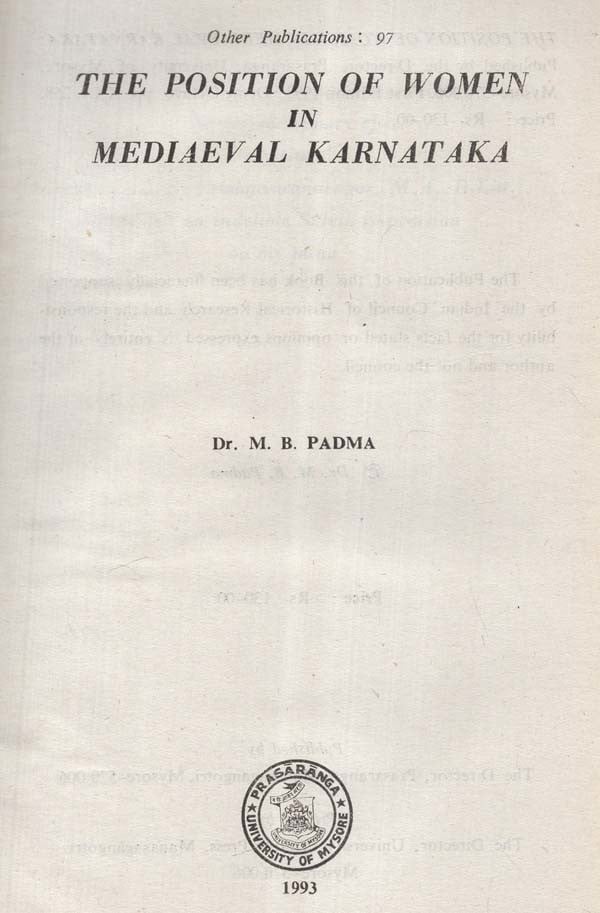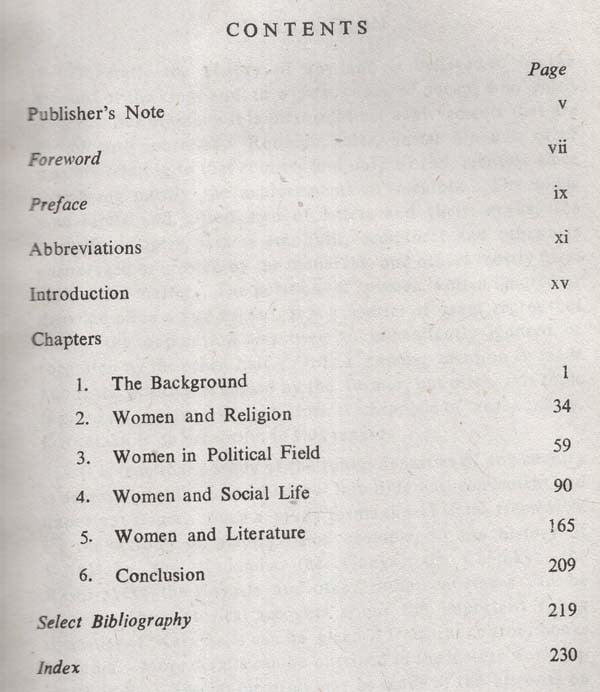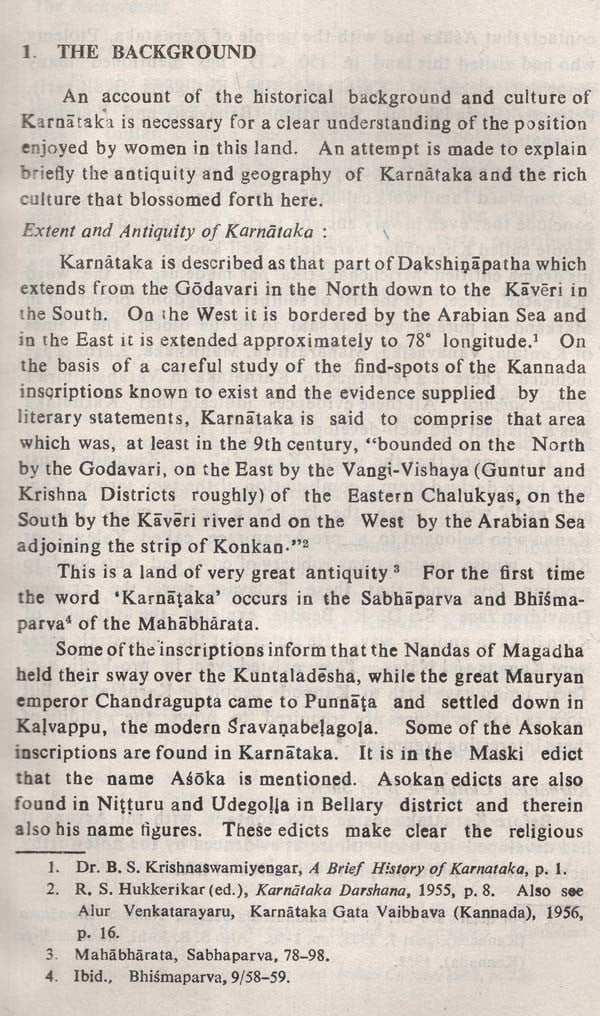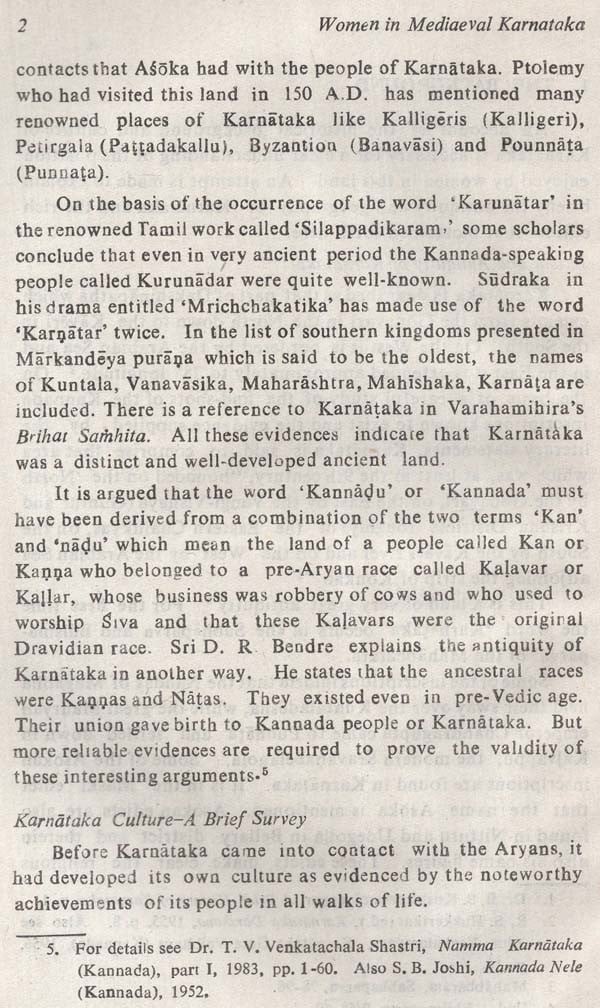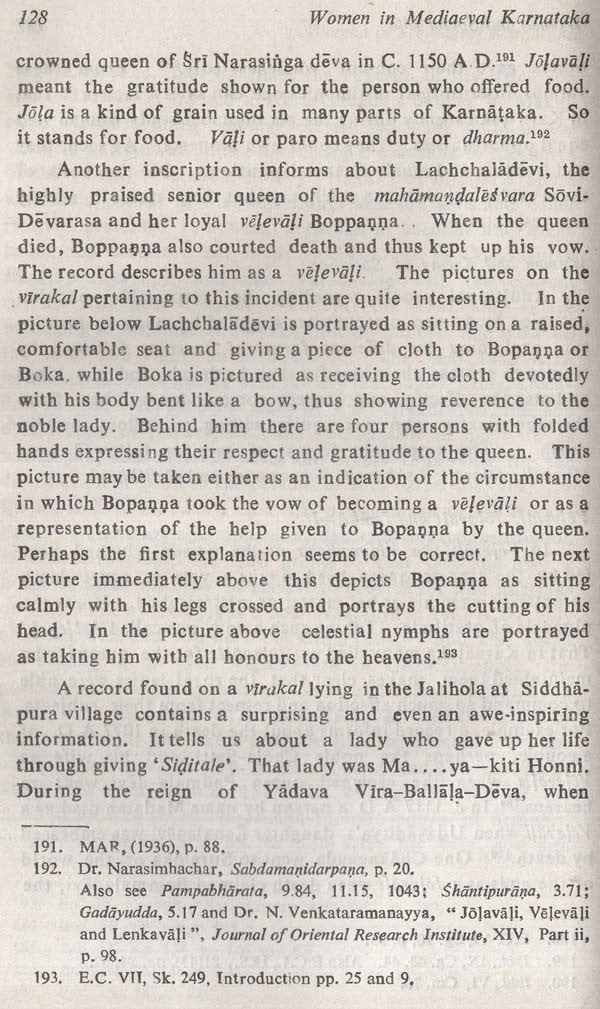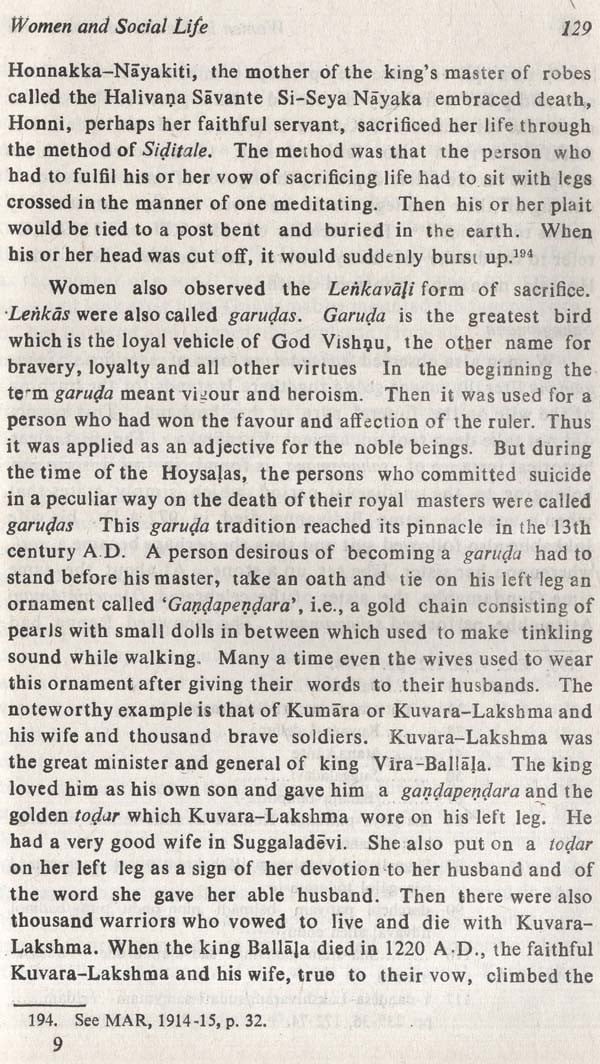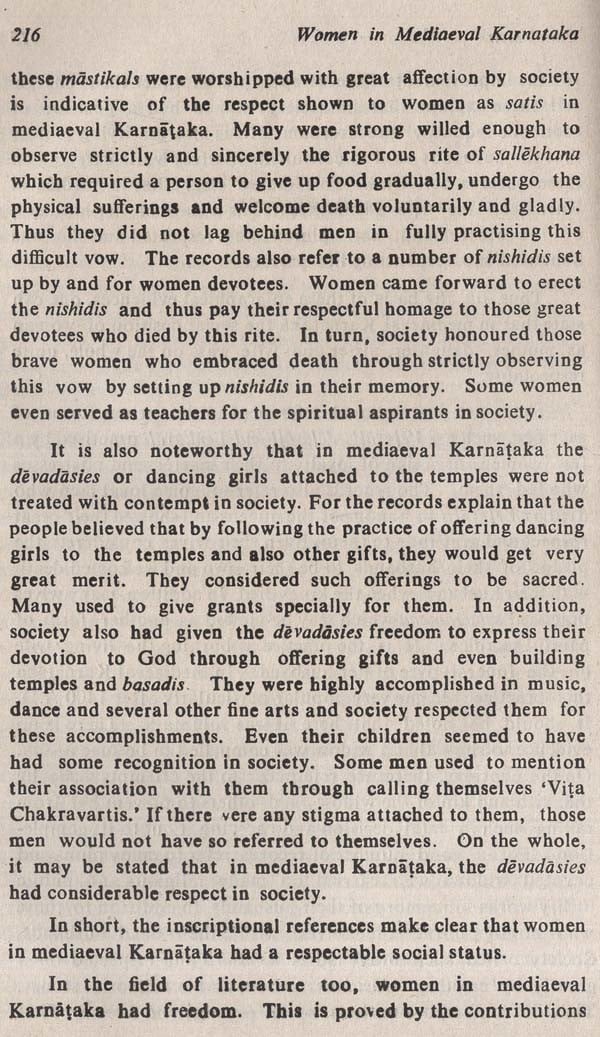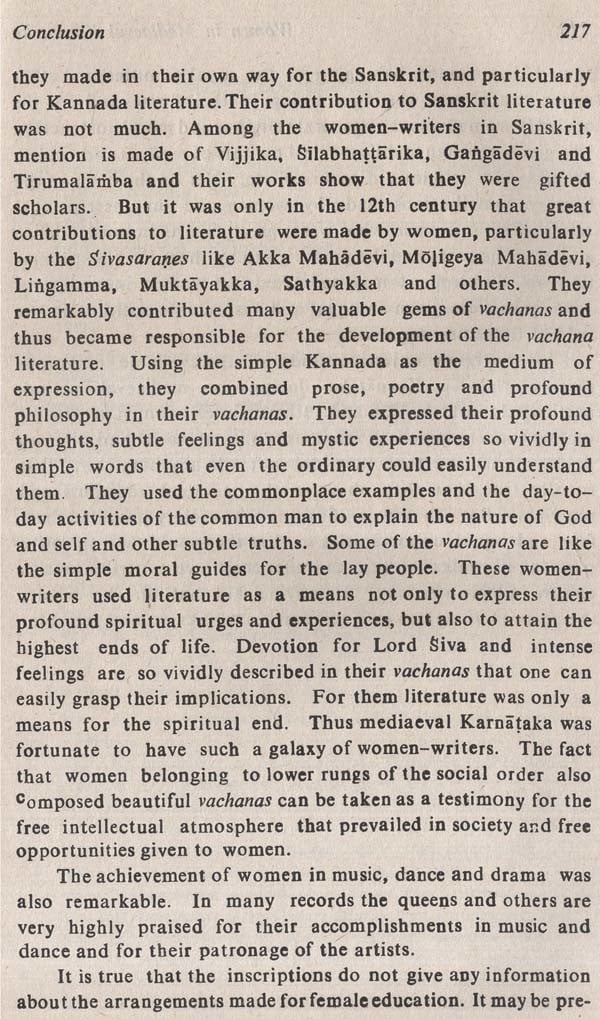
The Position of Women in Mediaeval Karnataka (An Old and Rare Book)
Book Specification
| Item Code: | AZE124 |
| Author: | M.B. Padma |
| Publisher: | UNIVERSITY OF MYSORE, MYSORE |
| Language: | ENGLISH |
| Edition: | 1993 |
| Pages: | 276 |
| Cover: | PAPERBACK |
| Weight | 270 gm |
Book Description
The author of this book has dragged out even those but stood behind, women of humble origins. They not only ruled independently and jointly with their husbands but also preserved the security and integrity of the fiefs and kingdoms in the absence of male members. The contribution made by them for Sanskrit and Kannada Literature is high-lighted. They might not have added anything new, but preserved the prevalent traditions and practices. The author has shown how society provided them free and equal opportunities so that they could take an active part in all walks of life. Sex was no hindrance.
There are six chapters herein the first of which is a back ground. In the others women's role in religion, politics, society and literature is discussed.
Here is a rare but much needed contribution to Women Studies.
She passed her M.A. in First Class from the Mysore University. She secured the Doctorate Degree in History from the same University.
She has participated in various Seminars organized by different historical societies and presented research papers. She has a good number of research articles to her credit in both Kannada and English Her book on Research Methodology in History entitled "Ithihasa Samsodhana Marga" published by Bapco Publications, Bangalore, has been prescribed by the various Universities for Post-graduate and M.Phil. Courses.
She was promoted as Professor of History in 1985. Presently she is working as the Principal, University Evening College, and University of Mysore.
Works on the position of women in Mediaeval Karnataka are few. In such a situation, this work is a welcome publication. The present study roughly covers a period of six centuries from the age of the Chalukyas of Kalyana to the fall of Vijayanagara. The work is based primarily on a critical study of epigraphical sources with literary works constituting secondary sources to explain the position occupied by women in religious, political, social and literary fields.
Our author has explained in detail the temples and basadis built by women and the various liberal grants given by them with special reference to Attimabbe and the Hoysala queen Santaladevi. The third chapter entitled Women in Political Field shows that in Mediaeval Karnataka women had equal rights and free opportunities to play a noteworthy part in the political field. They were provided with opportunities to play a variety of roles in the political field. They occupied positions of power and privilege and shouldered administrative responsibilities as viceroys, governors, regents, managers of different institutions etc. The fourth chapter on Women and Social Life throws light on the respectable position accorded to women as mother, daughter, sister and wife in the domestic and social fields. Inscriptional evidence is given to testify to the equal economic status accorded to them. The Devadasi system is discussed at length. That women played an important part in the field of literature resulting in the enrichment of Sanskrit and Kannada literature is clearly brought out in the fifth chapter.
The need for a work on the position of women in Mediaeval Karnataka has in large measure been met. In this study the author has broken new grounds.
It is true that a study of the ruling dynasties of any country is necessary to divide its history into diferens convenient and important stages Such a study forms the skeletal framework for the writing of history. For example, in the history of Karnataka the Kadamba, the Ganga, the Chilukya, the Rashtrakata, the Hoysala and other prominent stages can be traced The historical accounts about the important rolling dynastics of Karnataka can be gleased from the history books on India. More details can be obtained in the history works on South India Special mention may be made of the histories on Karnataka written by Dr. Fleet, Rice, Colonel Wilks, Hayavadana Rao, Altekar, Moraes, Saletore, Derrett, P. B. Desai, M. V. Krishna Rao, Dr. S. Srikantha Shastri, N. Lakshminarayana Rao and R. S. Panchamsthi. All these works based on epigraphical studies mainly deal with the political history of Karnataka and occasionally they throw light on the social conditions of this land.
**Contents and Sample Pages**
